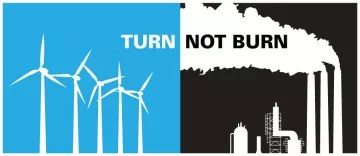Without reductions in the earth’s atmospheric temperature caused by fossil fuel production and operations, the climate crisis will continue to be the greatest existential threat to Planet Earth.
The climate crisis is witnessed today by extreme weather events - flooding, uncontrollable fires, droughts, and heat waves - all seen on a scale as never before. Greenhouse gas (GHG) emissions are the primary man-made cause of earth’s rising temperature, and it continues to pose a threat to maintaining an atmospheric temperature conducive to sustaining life.
Every ton of GHG cut to reduce climate pollution makes a huge difference, but that window of opportunity is rapidly closing. “There is a rapidly closing window of opportunity to secure a livable and sustainable future for all” wrote an IPCC Scientist in the latest climate change report in March 2023. This dire warning only underscores the immediate and urgent need to transition from fossil fuels to renewables at the same alarming rate as the climate crisis threat presents.
It’s Time to Turn, Not Burn
The U.S. produces more oil and gas than any other country in the world and is set to produce over 60% of new oil and gas, eight (8) times more than any other country. Annually, the U.S. oil and gas industry releases about 9 million tons of methane gas and other toxic chemicals into the atmosphere. This level of fossil fuel production and emissions puts us far from any course of avoiding the threats and realities of the climate crisis.
Besides devastating climate impacts, burning fossil fuels also impacts community health. Fence- and front-line communities, environmental justice communities disproportionately bear the burden of environmental pollution from these operations and the resulting adverse impacts:
- more than one million African Americans live within a half-mile of natural gas facilities,
- over one million African Americans face a “cancer risk above EPA’s level of concern” due to unclean air,
- more than 6.7 million African Americans live in the 91 U.S. counties with oil refineries
- In total, African Americans are 75% more likely than White people to live in “fence-line” communities (areas near commercial facilities that produce noise, odor, traffic, or emissions that directly affect the population).
In Virginia, there are a significant number of dangerous gas projects including:
- the Mountain Valley Pipeline (MVP)
- the Virginia Reliability Ripoff Project and the Commonwealth Energy Connector pipelines
- the Southside Reliability Enhancement Project
- the Virginia Electrification Project and,
- the proposed Williams Transco (Transco) Southeast Enhancement Reliability Pipeline.
- Including Dominion's proposed Chesterfield Peaker Plant in Chesterfield County.
The threats imposed by these projects exacerbate the impacts of climate change. The MVP alone will emit 89 million metric tons per year of carbon emissions - the annual equivalent to emissions from 24 coal plants. Adding insult to injury, not only does these fossil fuel infrastructure increase our exposure to the climate crisis, they also contribute to the destruction of those natural structures that offer some risk mitigation against climate change impact, such as, wetlands destruction and sedimentation and erosion impacts on water contamination. It is time to turn to renewable energy sources and not burn fossil fuel for our energy needs.
Wind blows gas away
In 2021, the University of Virginia’s Weldon Cooper Center for Public Policy published Decarbonizing Virginia’s Economy: Pathways to 2050 (January 2021), which demonstrates that decarbonizing Virginia’s economy is both feasible and affordable, and offers multiple benefits beyond lowering GHG emissions. “In all scenarios analyzed, Virginia’s expenditures on energy, as a share of Virginia’s economy, will be lower than in the recent past.” Moreover, the economic benefits in improved health, reduced global warming, and greater domestic energy production outweigh the costs. Importantly, the report finds that accelerating decarbonization is vital: “A quicker start means lower long-run costs; delay is costly.”
Offshore wind has the potential to deliver upwards of 30% of Virginia’s 100% clean energy goals, allowing Virginia to confront head-on the climate crisis with a renewable energy source that provides massive economic development opportunities and creates thousands of local, long-term, family-supporting jobs for many Virginians including high school and college grads, returning citizens, and veterans transitioning to the civilian workforce.
The Coastal Virginia Offshore Wind project will produce 2.6 gigawatts (GW) of electricity - enough clean energy to power up to 660,000 homes, and avoid as much as 5 million tons of carbon emissions annually. In 2024, the federal government will lease an additional area for Virginia offshore wind development which is easily capable of producing at least another 2.6 GW of clean energy and doubling the emissions avoided. Wind power from Avangrid’s Kitty Hawk project off North Carolina’s coast will come onshore and enter the PJM electric grid via Virginia with 3.5 GW of wind power.
These three projects - all estimated to be online by 2030 - will deliver almost 9.0 GW of clean power to Virginia, power over 2.3 million homes, and avoid approximately 17 millions tons of carbon emissions. That’s equivalent to over 4 million gas powered cars removed or 45.4 gas plants not built, expanded or shut down.
Full build-out of the offshore wind industry in Virginia is estimated to create over 5,200 jobs. Even without those near-future offshore wind jobs, clean energy continues to generate more jobs than gas, coal and oil combined. In 2022, there were 97,156 jobs in clean energy in Virginia, up 3.6% from the previous year. Nationally, there were 3.2 million Americans working in clean energy, up 5 percent from a year earlier. Meanwhile, fossil fuel jobs accounted for most of the energy jobs lost with a decrease of 29,270 jobs, down 3.1%.
